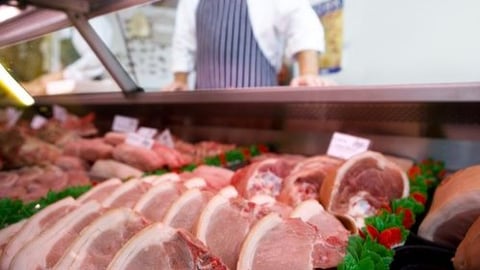Where Is Food Price Inflation Headed for Remainder of 2023?
While U.S. consumers are still feeling the pinch of food price inflation at the supermarket, industry insiders are becoming cautiously optimistic that relief is in sight. Representatives from FMI - The Food Industry Association and Dr. Ricky Volpe from California Polytechnic State University spoke on March 15 about the signs pointing toward shifting prices, as well as shopper sentiment and buying trends that have permeated grocery aisles.
Following a tough 2022, FMI’s VP of Tax, Trade, Sustainability & Policy Development Andy Harig anticipates further volatility in terms of rising and falling inflation in the coming months, with food prices remaining elevated in the short term. “There are positive signs in play that make us cautiously optimistic that the worst of food price inflation is behind us, though it’s clear we’re not out of the woods yet,” Harig said.
Though there is optimism among economists, it will still take time for downward price shifts to trickle down to the store level, leaving many consumers with lingering food price concerns, Harig explained. According to FMI data, 48% of shoppers report being extremely concerned about grocery prices rising, while a disconcerting 43% are concerned about having enough money to buy the food they eat.
Bright spots in the current economic landscape are apparent, though, Harig said, with recent FMI shopper data showing that consumers are spending $151 per week on average at the grocery store.
According to Volpe, big picture indicators are showing a shift to relative normalcy, especially as it pertains to prices on key agricultural commodities such as corn, soybeans, rice and barley. Other commodity prices, including those on eggs and wheat, could remain stubbornly high for the remainder of the year due to outside forces including avian flu and the war in Ukraine, Volpe explained. Transportation and labor issues are also still causing some major challenges.
Regardless, Volpe remains optimistic that inflation is beginning to recede. “My longer-term outlook is that I really think and hope that we’re on track toward much more normal year-over-year food price inflation going into 2024,” he said.
Consumer Shifts
When it comes to shifting consumer shopping habits as a result of higher prices, Harig explained that many shoppers are showing more interest in private store brands. FMI found that 30% of consumers bought more private brands as a result of higher grocery prices, and 41% have purchased more private label products since 2020. Additionally, 63% believe private brands offer good value and 43% buy them because of their quality.
Private label products are offering great opportunities for retailers and consumers alike, Volpe explained, and are also helping grocery stores evolve in an exciting way. In the greater scheme of things, they’re also helping to keep food prices in check.
“As private labels increase in prominence and their value proposition to consumers, what happens is they literally become more competitive with national brands,” Volpe said. “It’s a win for retailers and it’s a win for consumers because what happens is … there is some upstream competition going on within stores between national brands and private labels. That’s one force working to help moderate food prices and keep those prices down a little bit.”
Health and wellness remains important to consumers, said FMI VP of Fresh Foods Rick Stein, with produce sales rising in the past year despite rising prices. Consumers did spend their money differently, however, with organic produce sales falling and more conventional, canned and frozen fruits and vegetables seeing more market share. Additionally, FMI’s recent "Power of Produce" report found that 68% of shoppers want more value-added produce at their store.
Seafood sales, however, saw a drop in 2022 as many shoppers turned toward more affordable proteins. Stein does expect the category to rebound once inflationary prices ease, though, given consumers’ heightened interest in the category. The meat department reigned supreme in 2022, with a record $87.1 billion in sales. Sales in pounds were down slightly compared to 2021, but engagement is still trending above pre-pandemic levels.
Looking Ahead
Inflation isn’t going anywhere in the short term, but FMI’s executives remain positive about prospects for the food industry.
“I’m very optimistic, especially in the fresh departments,” Stein said. “There are a couple things working in our retailers’ favor. Consumers have decided to eat more at home and consumers have also decided to eat less processed foods. From a supply chain standpoint, a lot of efficiency came out of the pandemic, especially in the meat industry.”
Though Harig expects high food prices to remain the norm for most of 2023, he explained that the food industry is working on advancing technologies that will save time, money and resources to help get more affordable food onto consumers’ tables. This includes the use of driverless trucks, robotics, vertical farming, artificial intelligence, blockchain and much more.
“The food retail model is changing,” Harig said. “It’s undergone a tremendous amount of evolution since the start of the pandemic and continues to change on a daily basis. Grocers are continuing to expand their fresh perimeter departments to cater to shoppers’ evolving tastes and behaviors, and this includes growing demand for store brand products."






